The 56-year-old widow wasn’t the first woman –— nor the first queen for that matter — to be imprisoned and she wouldn’t be the last. Sentenced to five years of hard labor for treason, her sentence had been softened. It was commuted to imprisonment in what had been, in more serene times, her bedroom. She described the small apartment on the second floor of the palace. There was “one single common chair, an iron safe, a bureau, a chiffonier…and a cupboard, intended for eatables…a bath-room, and also a corner room and a little boudoir…” The windows were of frosted glass, installed to replace those broken in an earlier attack on the palace.
The year was 1895. The Queen was Liliuokalani and the place was Honolulu. Outside, life continued, but under the control of American interests. Hawaii was too juicy a plum to leave in the hands of the indigenous people. Not only did it offer the sweetness of its sugar industry, it was also an incomparable perch for military power in the vast, mostly empty, Pacific Ocean. Over the decades since Captain Cook landed in 1778, the United States had been steadily pushing their influence over Hawaii’s land and people. Missionaries had done their frosty best to instill Western culture and beliefs. Their children had intermarried with the indigenous elite and royals. The queen herself had married American-born John Owen Dominis and was a devout Presbyterian.
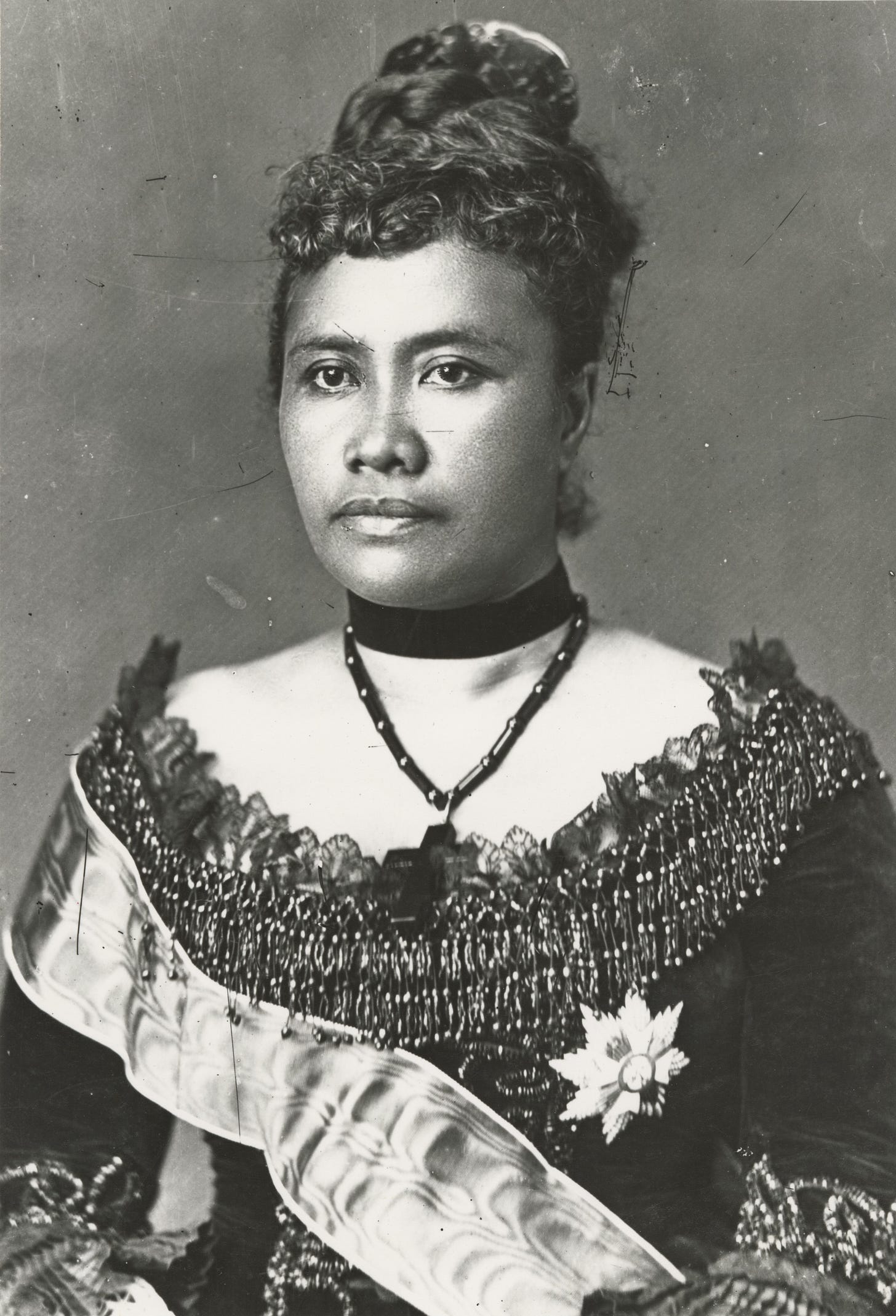
Foreign interests had united with Hawaiians of American ancestry to overthrow the queen in an 1893 coup. The US military was called in. An 1895 attempt to reinstate the monarchy failed. Queen Liliuokalani was tried and convicted for treason. Determined to tamp down her power and prevent any repeat of the 1895 uprising, she was imprisoned. Her contact with the outside world was cut off. No visitors were permitted except a single lady-in-waiting. No newspapers or “general literature” was allowed in the chamber. Her days ticked by, measured by the pacing of the guards outside her door – up the hall and back, up the hall and back, bootheels clicking like a human metronome.
Permitted to use a lead pencil and paper, the queen spent time composing music. She was a talented musician. Years earlier, she had composed what has become probably the most famous Hawaiian song, “Aloha Oe.” Written originally as a love song, the hauntingly lovely piece would transform with her incarceration to become a farewell between the Queen and her realm.
Queen Liliuokalani also turned to a method used by other disenfranchised women to deliver a message. Needles in hand, she and the women who rotated through her prison as companions set to making a quilt. They turned to the crazy quilt style, a style which makes wonderful use of fancy fabrics and was highly popular at the time.
No one should doubt the patriotic sentiments stitched in what would become a 97- by 95-inch quilt composed of nine panels and a central medallion. In the center square, the women embroidered “Imprisoned at Iolani Palace…We began the quilt here...” It records the sequence of the events – the date the queen was forced to abdicate, the date of the abortive attempt to reinstate her. On the pieces of velvet, satin, silk, brocade, and linen — presumably clipped from the women’s clothing — are listed the names of supporters and friends. Symbols such as a helmet of the Queen’s guard and a phoenix — the bird which rises from the ashes of defeat — make her desires clear. Amongst the feather stitches and fancy blanket stitches nestle an owl, hat bands, badges, and patriotic ribbons.
The Queen was not the first Hawaiian to turn to quilting as a form of protest. The Kingdom of Hawaii’s flag, adopted in 1845 was a snappy affair. Horizontal red, white, and blue stripes covered it except for the upper left-hand portion which featured a small Union Jack. After the 1893 coup, public display of the royal flag was forbidden. In protest, a flurry of “My Beloved Flag” quilts — which of course were only on display in the privacy of a home — covered loyalists’ beds. In 1898, it became the territorial flag of Hawaii and is now the state flag.
Day after day, the women worked to create their historic document in cloth. Ten months inched on until Queen Liliuokalani was released from her bedroom. She would never reign again. Though a report to US President Cleveland found abuses of power and the President in 1893 had called for correction of this, the annexation proceeded. Hawaii became a United States territory and, in 1959, a state.
One hundred years after the Queen’s imprisonment and the overthrow of the Hawaiian government, the Apology Resolution was passed by the US Congress and signed by President Bill Clinton. The Queen’s Quilt, also known as the Imprisonment Quilt, made its way back to Iolani Palace and is displayed in the second-floor bedroom where it began.
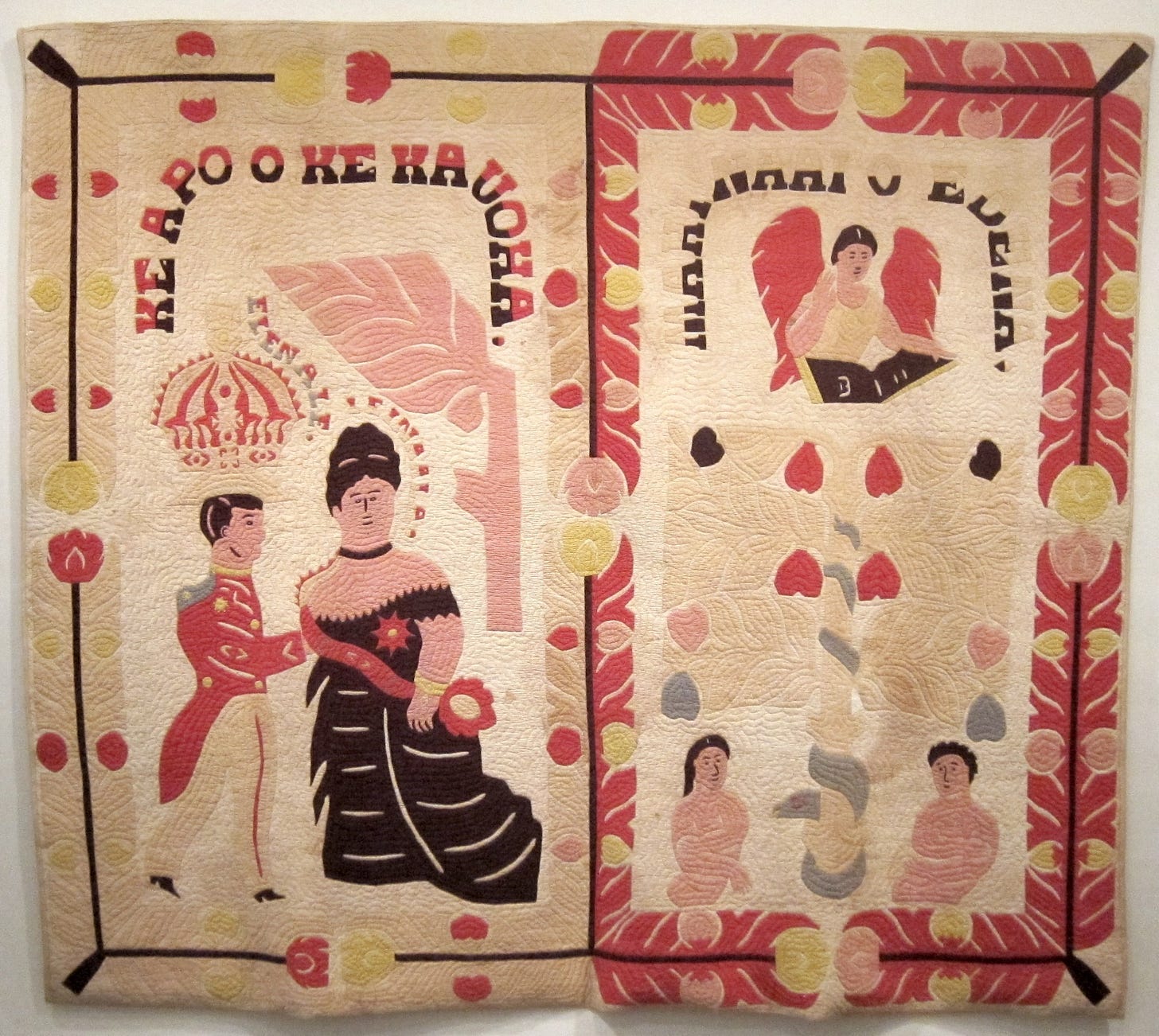
But quilting in Hawaii was not just for queens and political protesters.
Before contact with the West, Hawaiians developed kapa, a fabric made by felting the inner layer of the mulberry tree. This bark cloth was decorated by impressing designs on it with natural dyes.
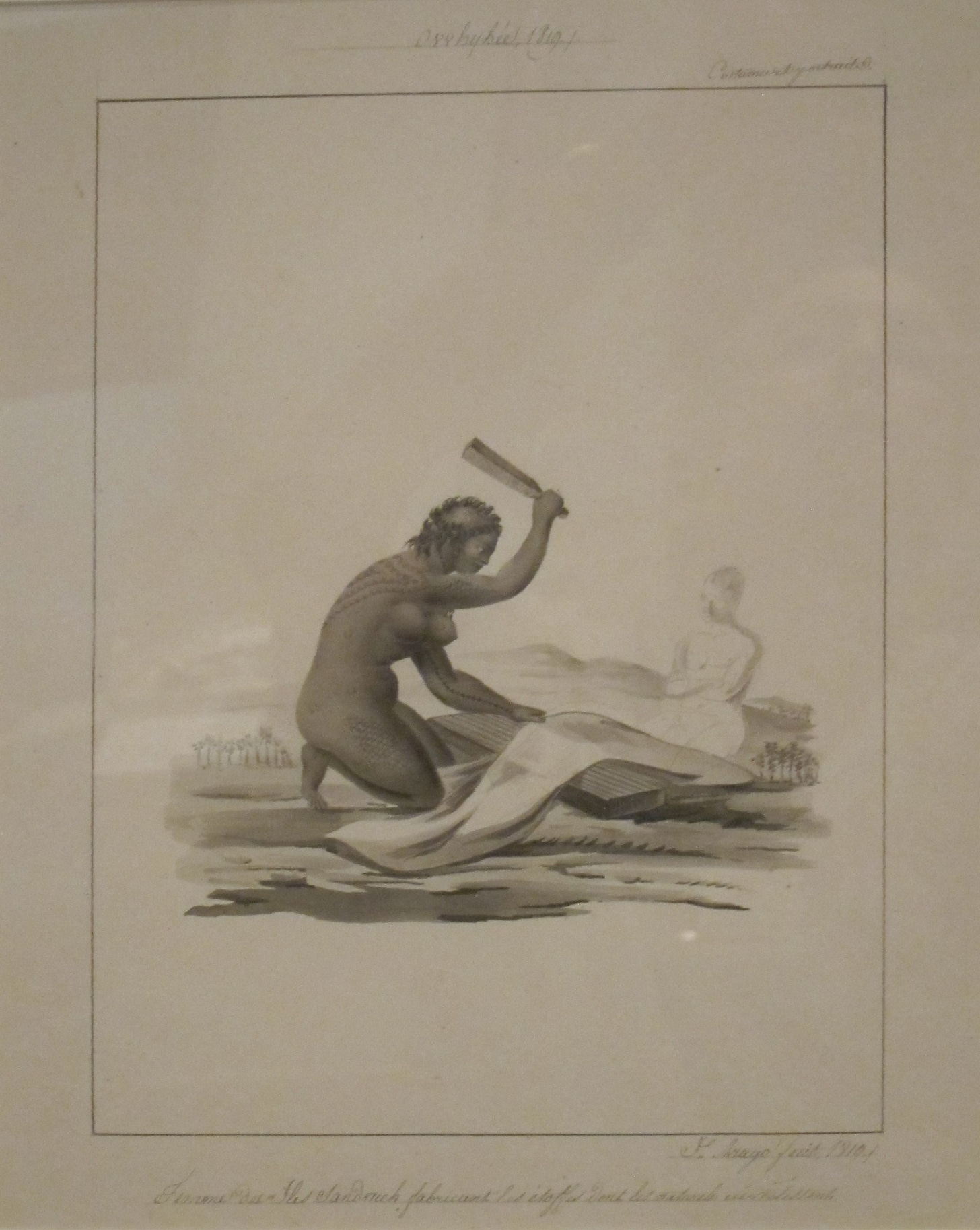
An outgrowth of the 1820 arrival of Christian missionaries to Hawaii was the adoption of new clothing styles and fabrics. The missionary women promoted modesty and opposed the tropical practice of women going bare-breasted. They modified the Western dresses of the time to one more suitable for the warm climate. Known as holoku, the missionary-designed dress had a full, straight skirt attached to a yoke and long, straight sleeves. Underneath, short-sleeved, shift-like muumuus were worn. Muumuus were also worn alone.
The missionary women also taught quilting to the Hawaiian women. The holoku and muumuus, with their straight lines, did not create many usable scraps for piecing quilts. Applique quilts are believed to have come to Hawaii between 1840 and 1860. By 1870, the Hawaiians had developed their unique quilt style, one not predicated on tiny scraps of left over fabric.
The quintessential Hawaiian quilt is a two-color applique quilt. The applique is cut and sewn as one piece. It is symmetrical “to the eighth.” That is, the pattern is created by folding the applique fabric into eighths, like making a paper snowflake. Then, the edges are cut to form the desired shapes. Concentric lines of small hand stitches echo the pattern. These are set about one-half inch apart and done with about six to eight stitches per inch. Subjects often are from nature.
The influence of handmade kapa cloth can be seen in the use of natural subjects. The echo quilting has been compared to the repetitive imprint lines found in kapa left by the tamping of the wooden print blocks.
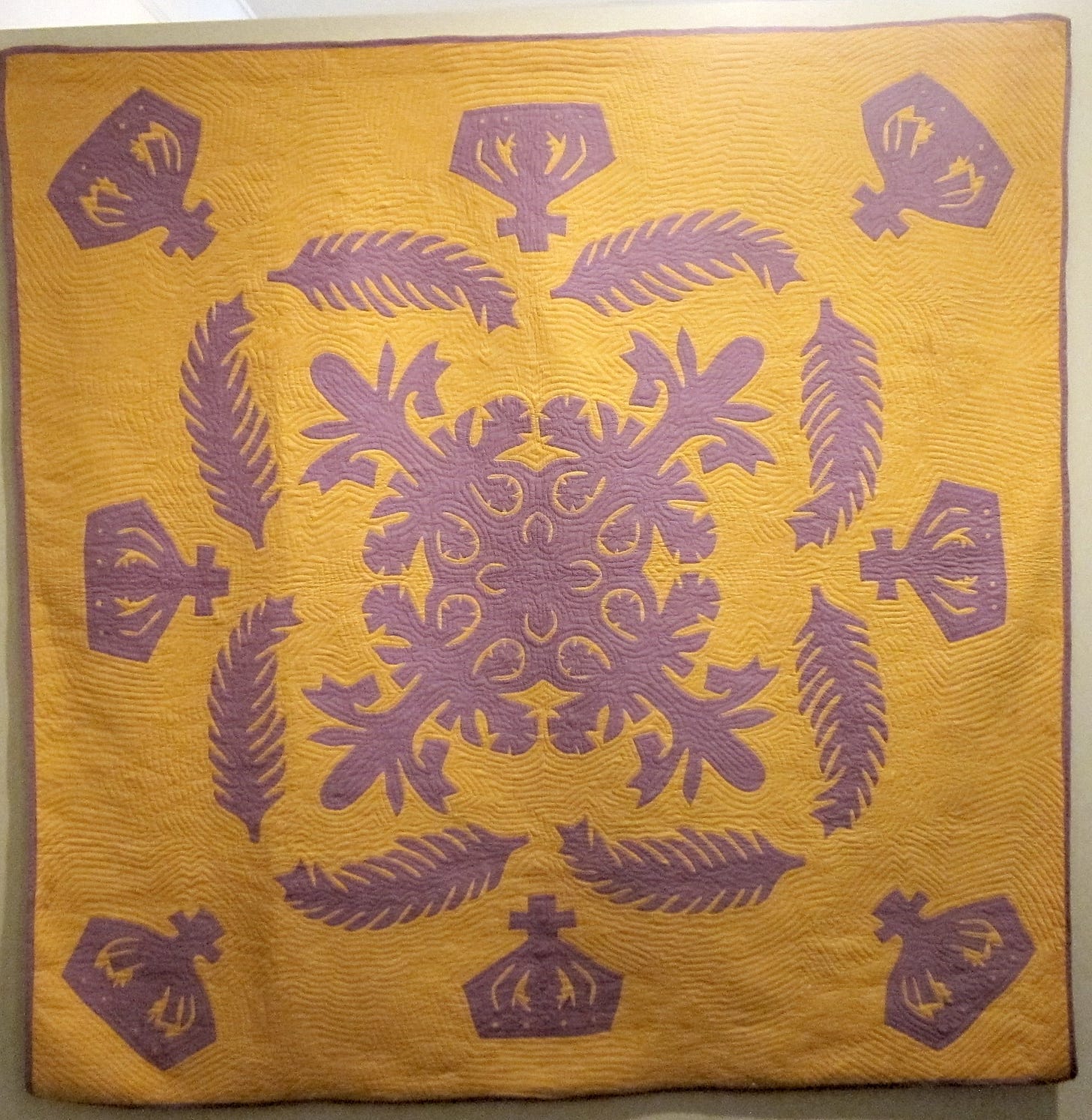
Like many folk practices, there are unprovable stories about the origins of Hawaiian applique quilts. One is that they were inspired by watching children cut out paper snowflakes. Another is that a woman noticed the shadow of the breadfruit tree on fabric she had placed in the sun to dry. She traced the shadow on the cloth and used it to create an applique.
Traditionally, quilts were done in private at home. They were not shown to others till complete. This assured it was solely the design of the quilter and free of others’ input. Each design was given a name. These might be descriptive or poetic or, at times, with hidden meanings only known to the originator. The quilts were believed to embody the mana (spirit) of the creator. As a result, often, patterns and quilts were destroyed or buried with their maker. If not, too much spirit might be left behind and the quilter might not be able to achieve total rest after death
Today, the Hawaiian quilting community carries on the tradition of making beautiful quilts and using them to communicate.
“Fabulous!” Marilyn Sameshima sums up the response to her call for quilt donations in the aftermath of the 2023 Maui fires. “So touched…” Marilyn, owner of the Maui Quilt Shop in Wailuku on Maui, wanted to give comfort to those whose lives were frayed by the disaster. She posted a call out for quilts on Facebook. Over the following year, nearly 6000 quilts were donated. Marilyn and her team distributed them to newly homeless folks, families who had lost members, first responders who found themselves at times on both sides of the equations — fighting against the fire and suffering their own personal losses. The donors came from nearly every state as well as Canada. Sameshima shared, in an interview with Bozeman, Montana’s KBZK news, “They hug them so tight, it’s like their new possession — their only possession. It’s becoming an heirloom because they lost everything.”
If you’d like to try your hand at Hawaiian applique quilting, the Maui Quilt shop sells kits for pillow tops so you can start on a small scale. The Hawaiian Quilt Guild, founded in 1984 to preserve the tradition of quilting, is open for membership to folks living in and beyond Hawaii. If you get to Oahu, the Bishop Museum usually has Hawaiian quilts on display.

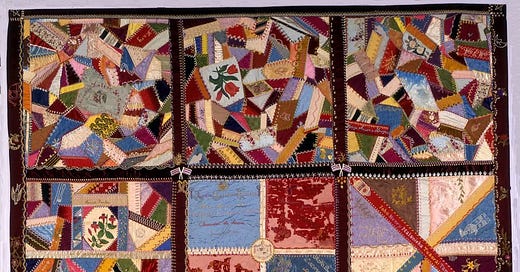



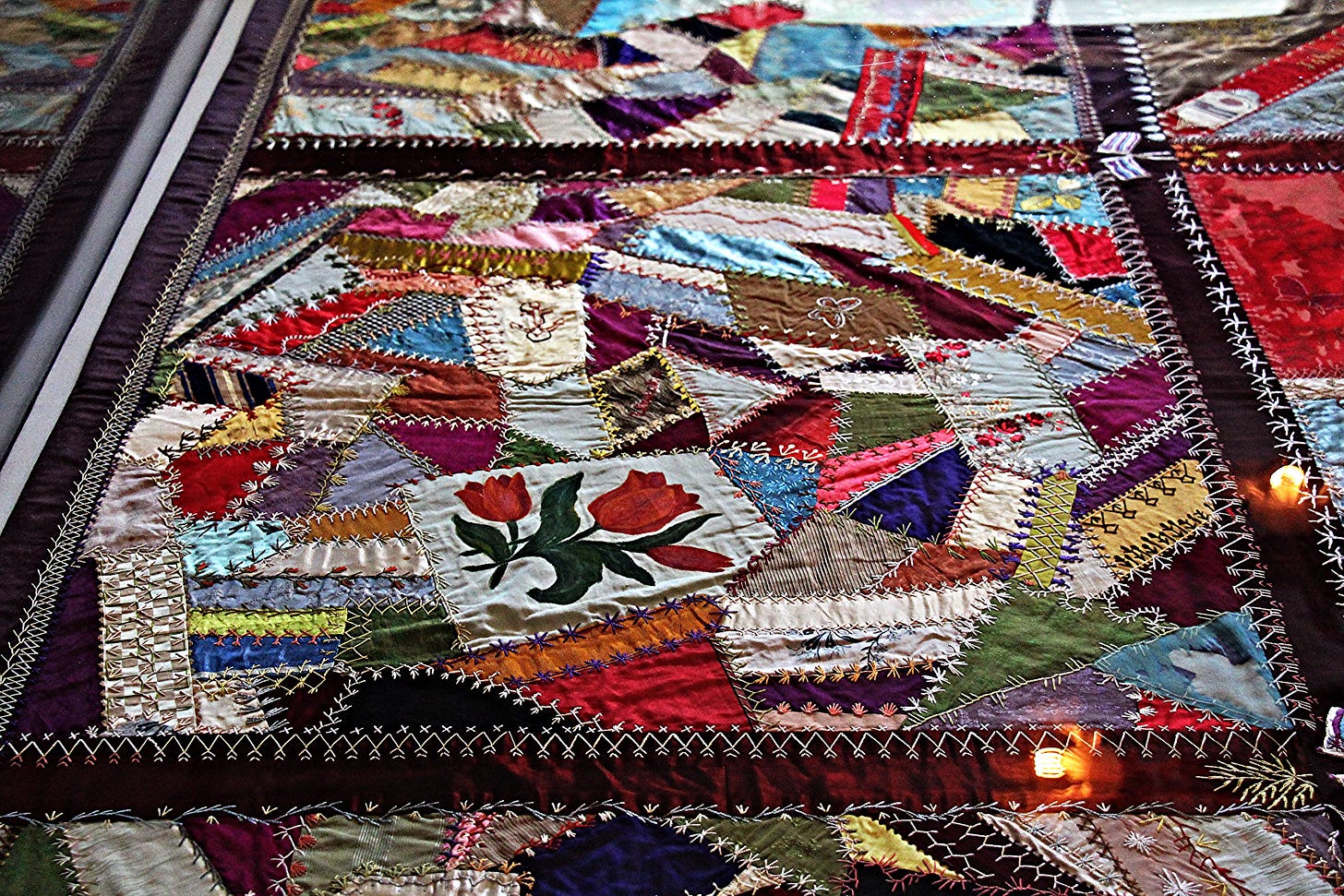
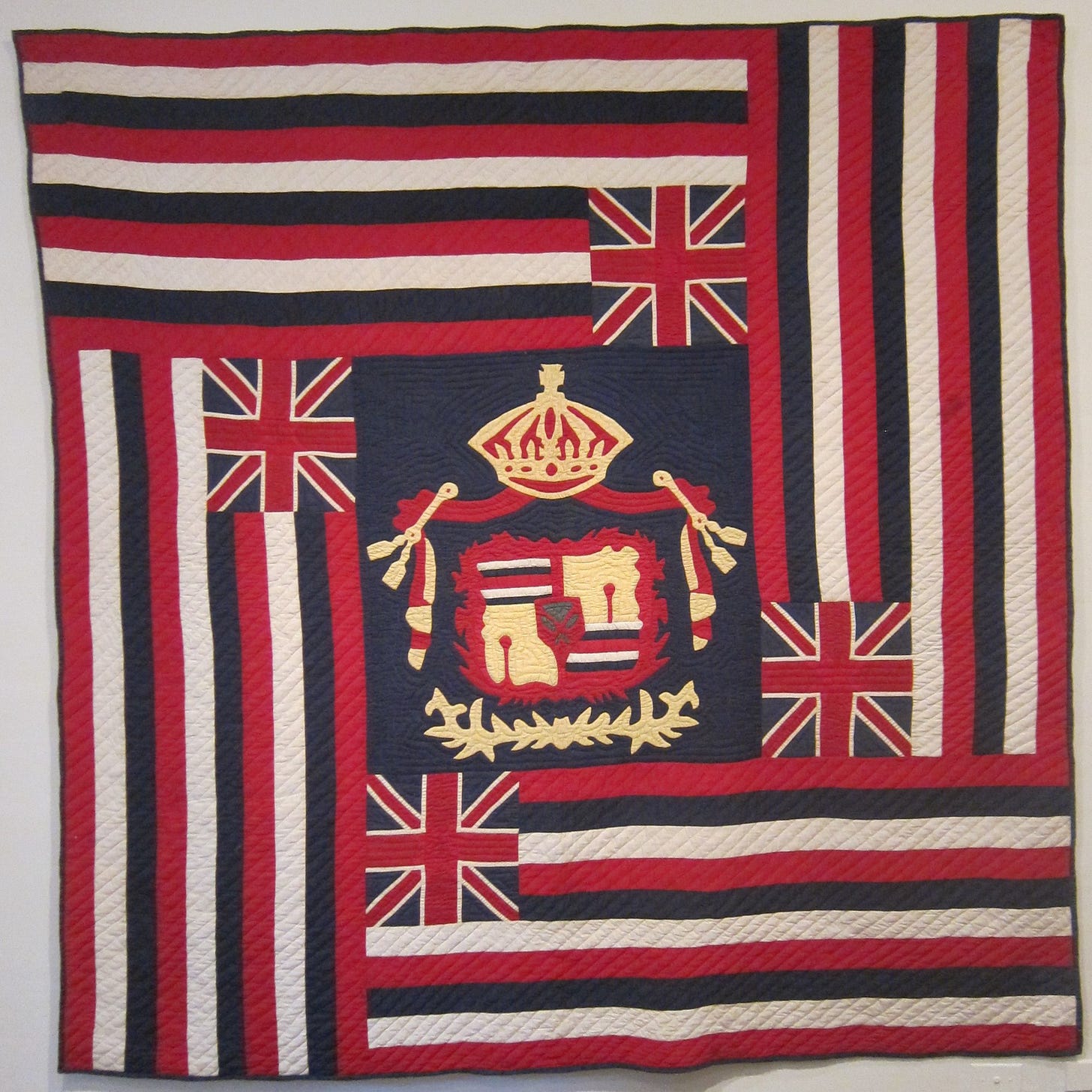
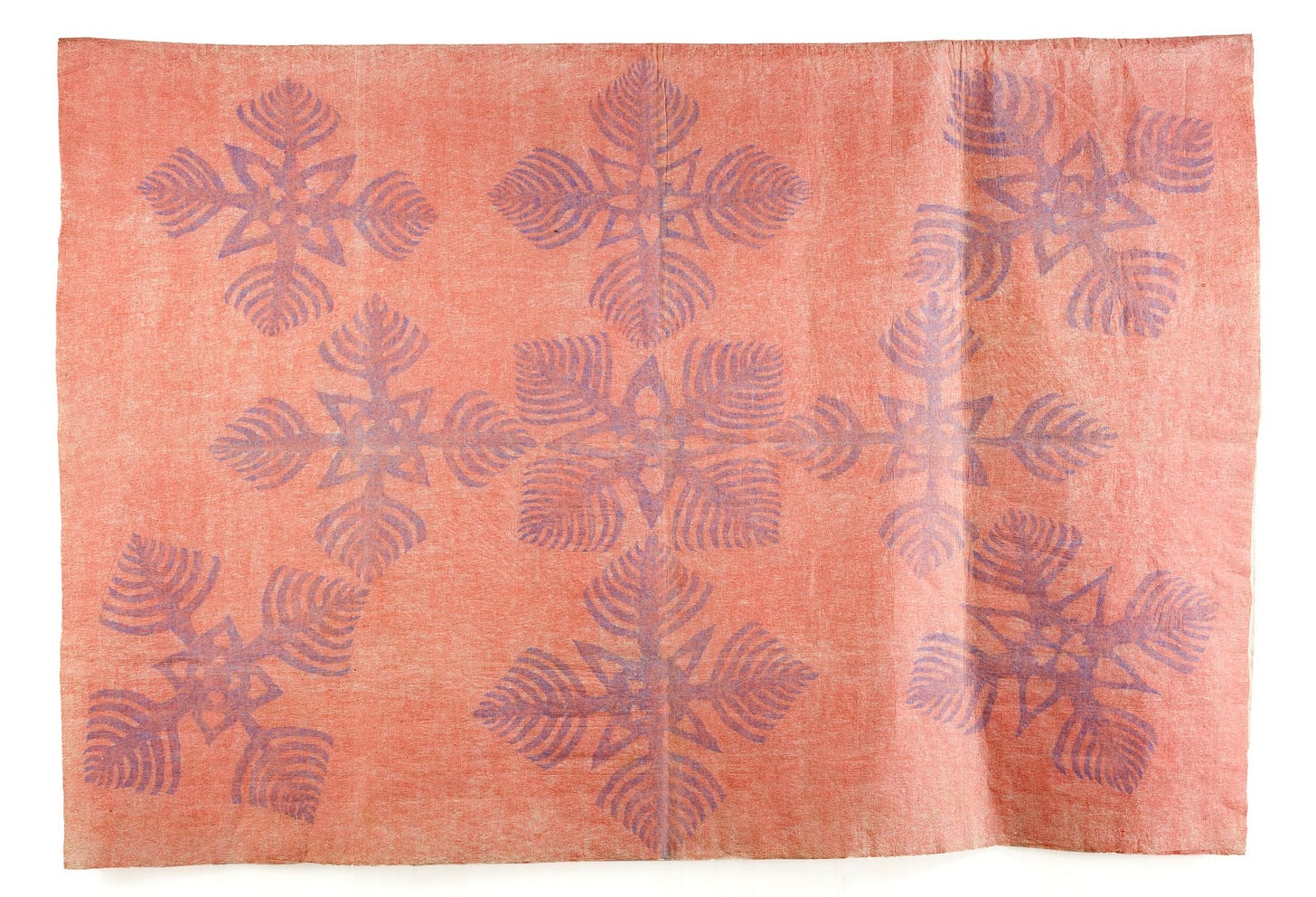
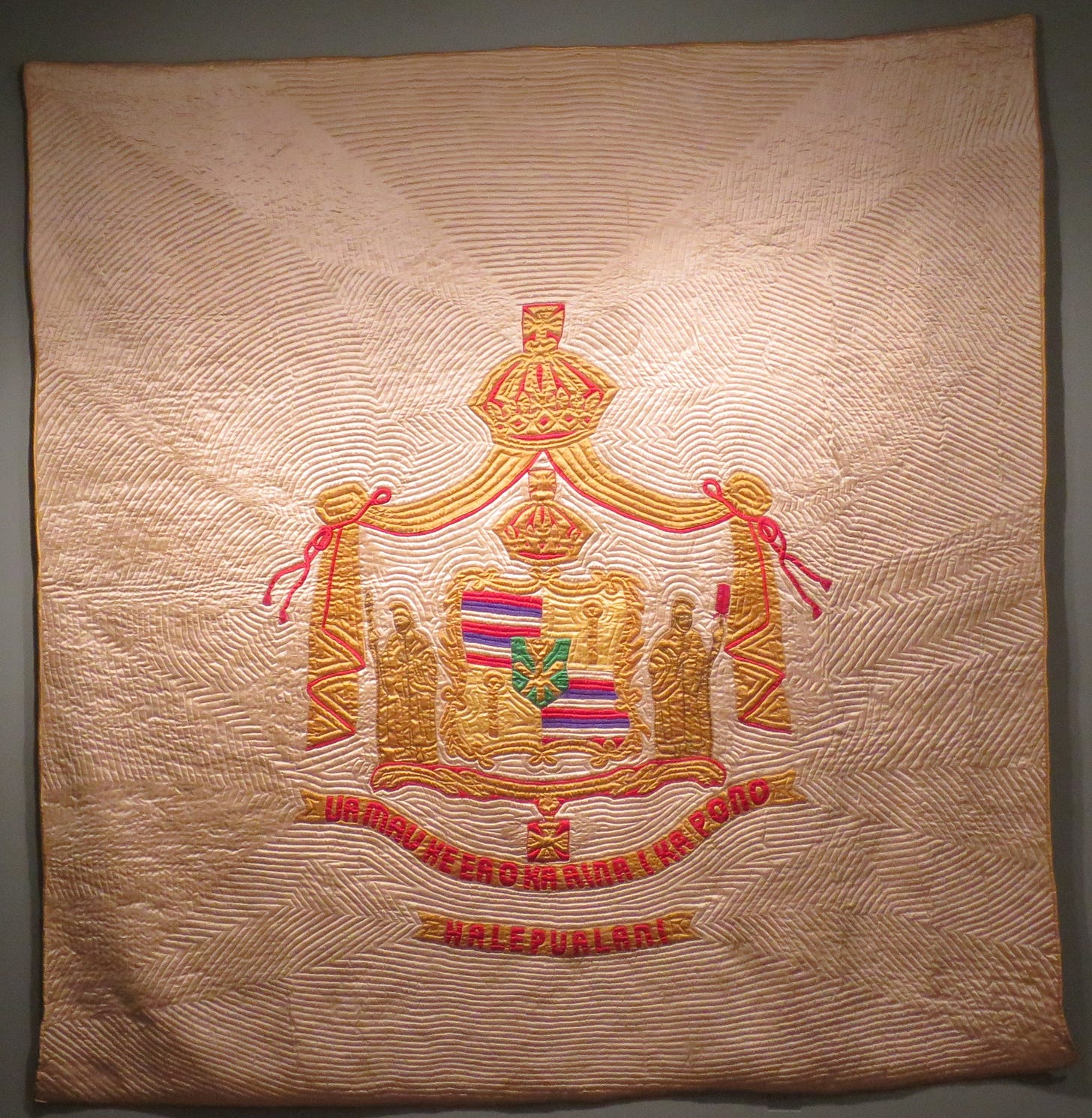

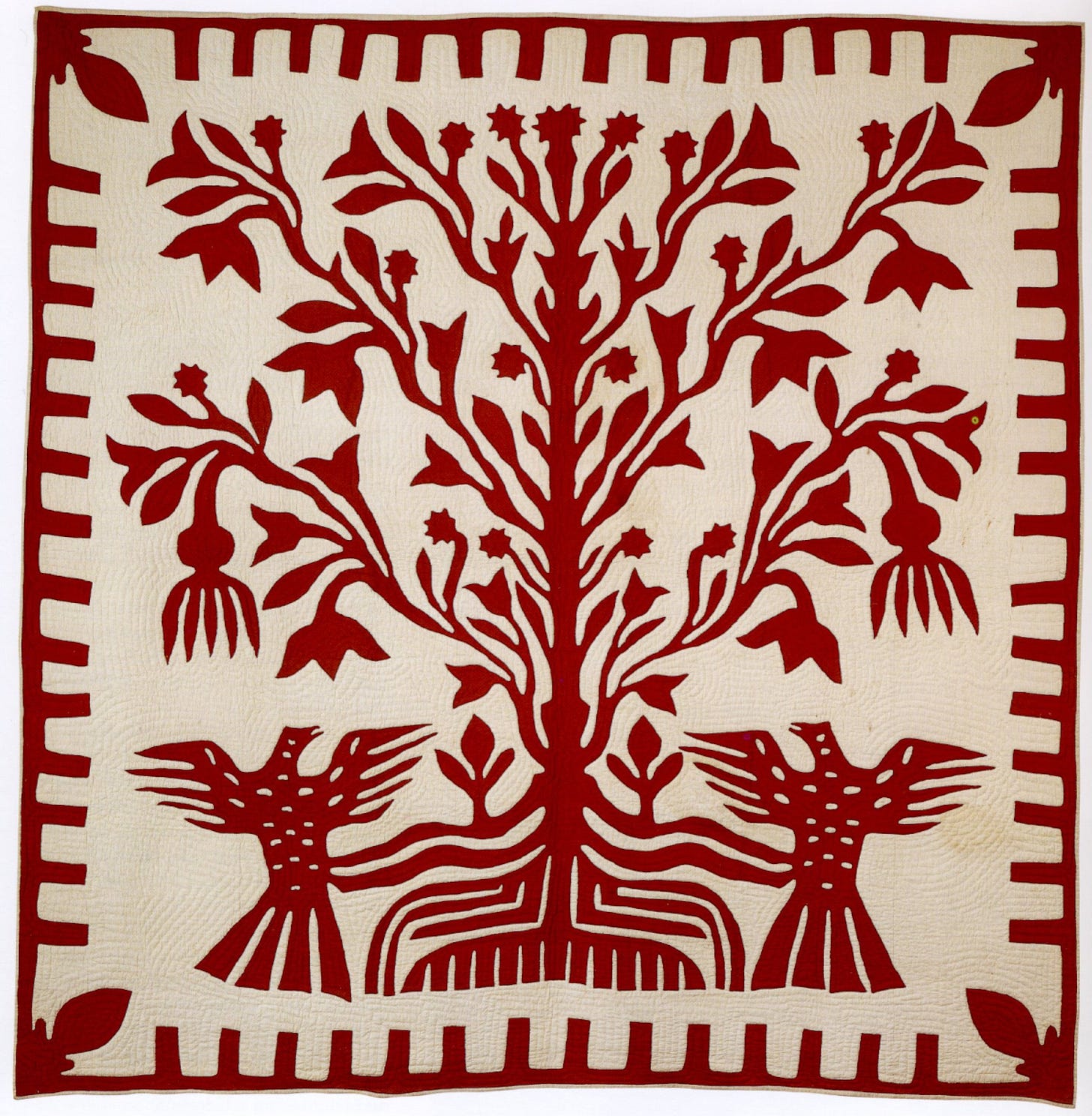
I enjoyed your article, Diane. Very insightful.